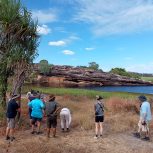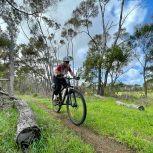9 Must-See West Australian Orchids
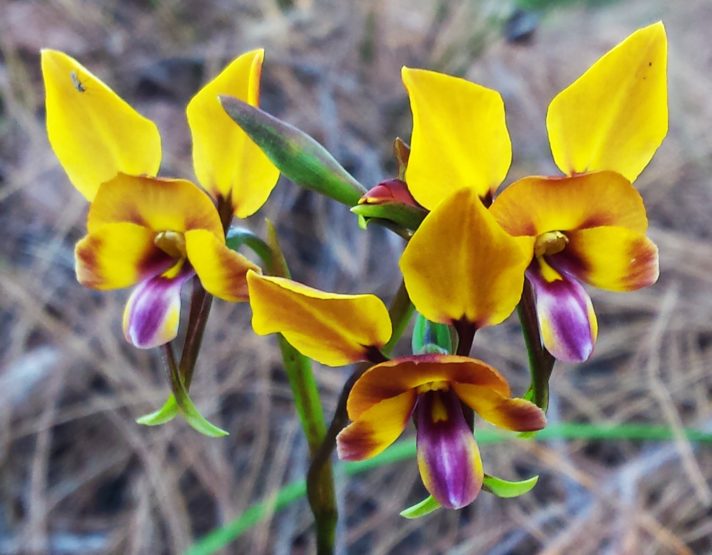
9 Must-See West Australian Orchids
Posted on
Hello Orchid enthusiasts!
With more than 430 different species of orchids to be found in the SW corner of Western Australia, it could seem daunting to start hunting for them. What to look for? When will I find it? Where will I find it? What is it called? You could join us on a bushwalk in spring and learn from our super guides, or maybe you’ve already been on tour but can’t remember the names! – this list will help get you started. It will get looking for these gems every time you’re out in the bush where they bloom. Enjoy the hunt.
I have chosen the list based on visibility, commonality and beauty. I’m calling them ‘must-see’ because I know that if you go out and look for these 9, you should find them. I haven’t listed any rare or endangered orchids. The 9 listed here are the must-see orchids that once you find and know them, you’ll be surprised where you keep finding them. It might even be a springboard to a deeper appreciation of orchids.
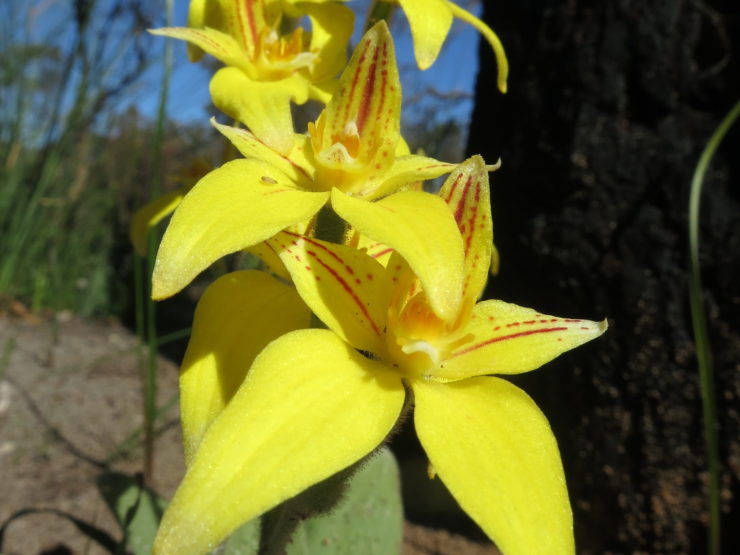
Cowslip (Caledenia flava)
Caledenias are the ‘spider’ orchid family and the largest group of WA orchids. Cowslip is your number one must-see orchid for several reasons. With their bright yellow colouring they are also easy to find, making them perfect for beginners and taking children out orchid hunting. They are common, have a wide distribution and long flowering period. I love their erect posture and flamboyant colouring. To me they look like their throwing their arms in the air ready to party. You can find them in a wide variety of habitats from Geraldton to east of Esperance. If you go for a bushwalk pretty much anywhere in SW WA in spring, these are the orchid you will most likely spot.
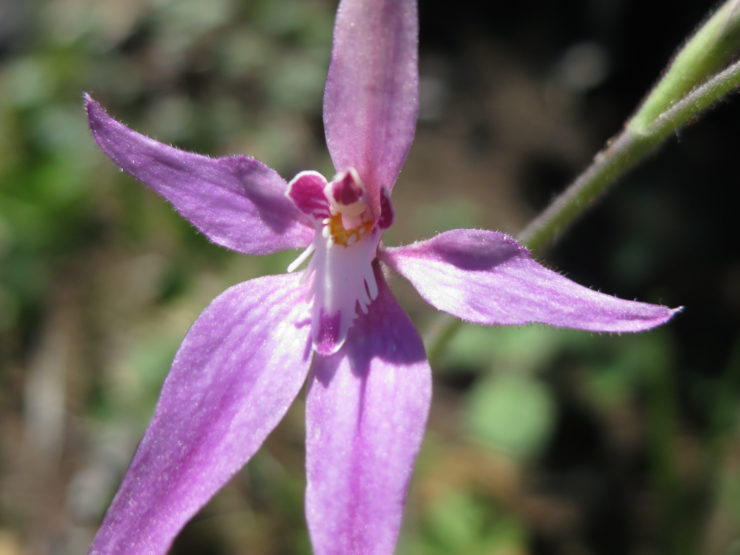
Pink Fairy (Caledenia latifolia)
Pretty and common, Pink Fairies are beautifully named, with their pink petals and white centre. Who doesn’t want to imagine fairies are real? They are, and if you walk the Cape to Cape track in spring you might just find them as your almost constant companion as they line the track either side in many places, often just metres from the ocean. They are also easily found in Perth bushland too, massing under Tuart trees.
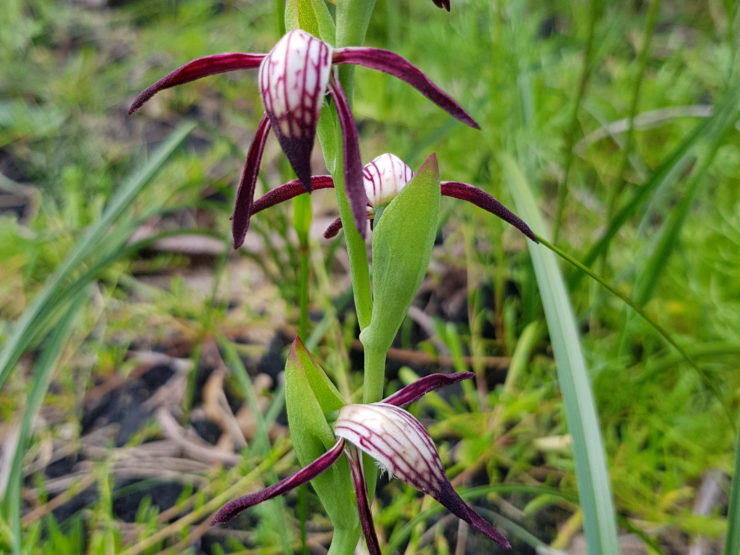
Red Beak (Pyrorchis nigricans)
Named from the Greek pyr meaning fire, the pyrorchis species usually only flower the spring following a summer fire. Do you know of an area that’s had a summer fire? Then it’s probably worth having a hunt for Redbeaks. Their colonies are hard to miss amongst the burnt barrenness. The flower lasts quite awhile, before turning black, hence the nigricans (black) in the name. They have a single large leaf, often forming colonies but it takes a fire to make them flower. I’ve seen them both sides of the one firebreak with the burnt side flowering and the unburnt side just a mass of ‘elephant ear’ leaves.
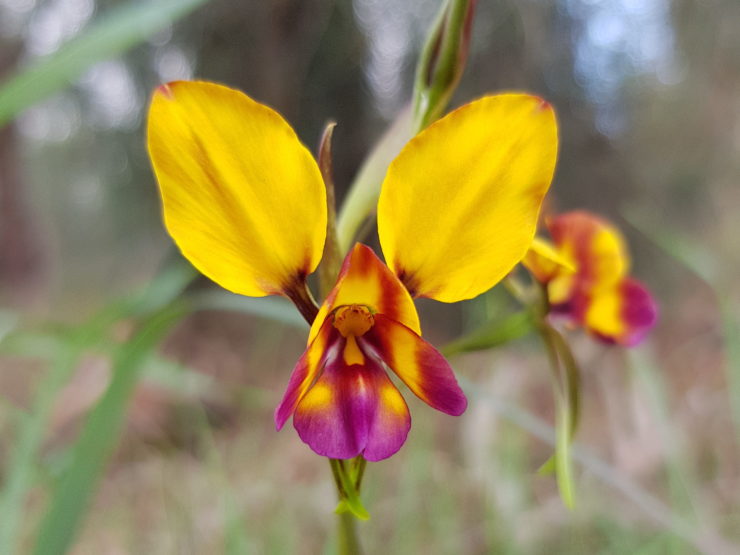
Donkey (Diuris species)
These orchids with their golden yellow ears and burgundy to brown centre are widely distributed and standing taller than nearby grasses you should see them clearly. They’re common, so knowing donkey orchids will make you instantly seem an expert to your friends. There are about 46 species of Diuris in WA. Rather than give you a specific one to find, learn what they look like and then go for a walk to find them. If you wish, take some photos and then try to decipher which exact Donkey orchid you have found. I’ll warn you that even the experts struggle with just subtle differences between species. Wireless Hill Park in spring has masses of these.
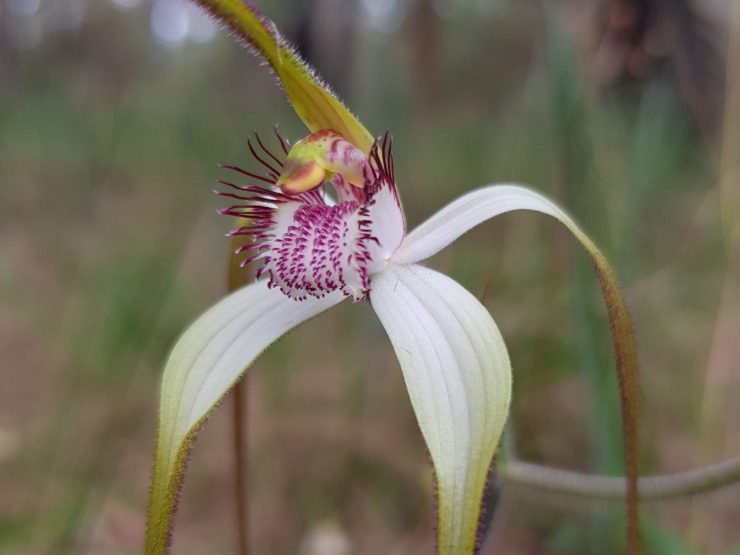
White spider (Caledenia longicauda)
With it’s long white droopy petals, this is the classic spider orchid. They are tall enough to be relatively easy to spot. Usually fairly solitary or sparse, occasionally you might be lucky enough to find masses of white spiders in spots I call ‘Spiderland’. There are quite a few named subspecies of these. I found the Hills white spider orchid subspecies clivicola with a group of hikers on a day walk to Monadnocks near Sullivan Rock
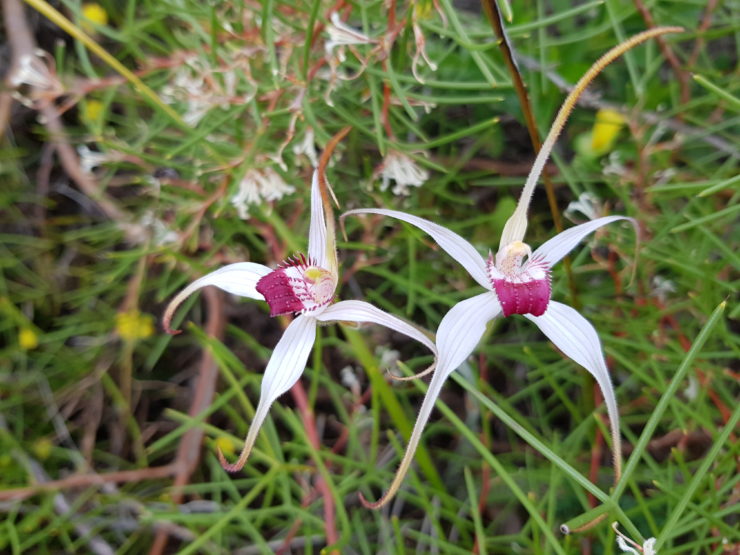
Exotic Spider (Caledenia Nivalis)
With erect white petals and a pink middle (labellum), this is one of my favourite orchids. It really is exotic. Found only in a tiny strip of coast from Cape Naturaliste to Moses Rock. Unless you are hiking the Cape to Cape, this is one you might have to choose to go and hunt to tick off. For a week or two in September, you might see a few beside the track further north, but you read it here that the best spot is beside the Cape to Cape track between the Moses Rock carpark and Quinninup Falls. You can see the Falls as part of the Cape to Cape walk or make it a nice short hike from Moses Rock to the Falls and back.
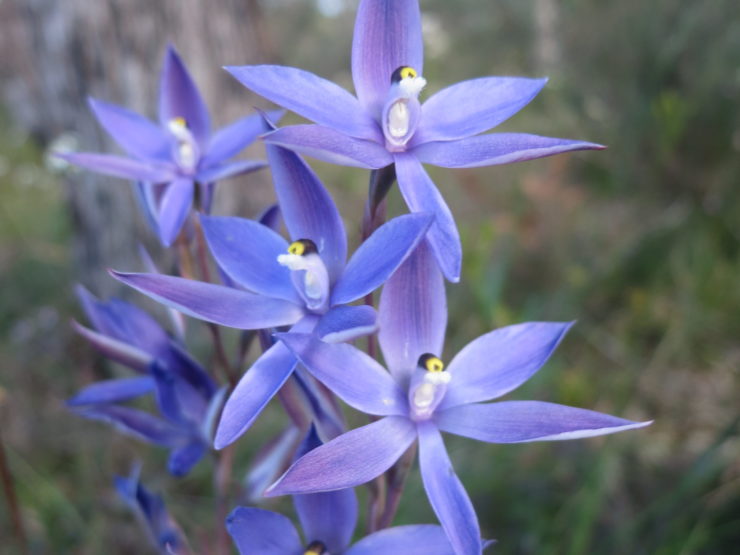
Sun orchids (Thelymitra species)
Found later in the season and with up to 20 bright flowers on a single stalk, the sun orchids make a pretty find. Often locally common, I remember walking on the Bibbulmun track near the Albany windfarm with sun orchids galore. Thelymitras are called ‘sun orchids’ because the flowers open on warm sunny days. On cool or cloudy days and at night, they close up. The Blue Lady and Scented Sun are two common sun orchids that you might find in your travels. Most sun orchids have a lovely perfume, so when you find them, don’t forget to smell the aroma.
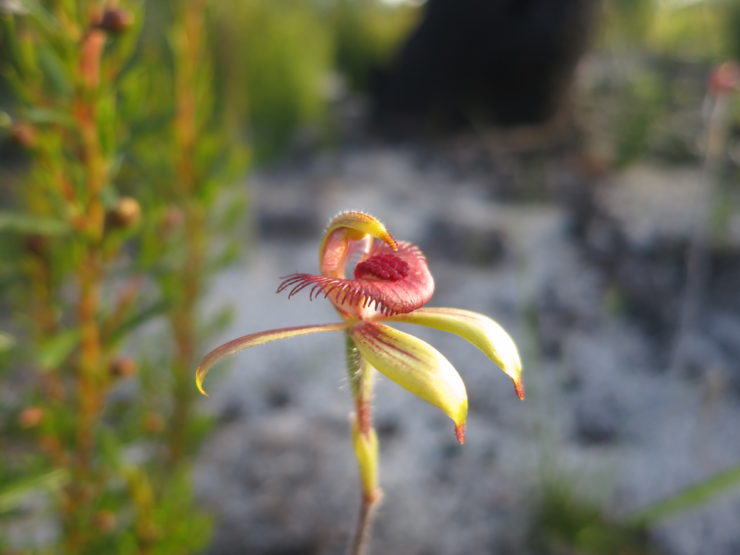
Dancing Spider (Caledenia discoidea)
Not as common as some orchids on the list, there are still places where there are masses of these. This might be orchid that as you get your eye trained, having learnt to find others on the list, you spot this in places where you missed it before. Nothing has changed. You’re just getting better. I love the botanical name. It’s a dancing spider and the name is disco-idea. Ha. Ha. Some years are better than others but Kwinana Wildflower Park is one of the best places to find Dancing Spiders.
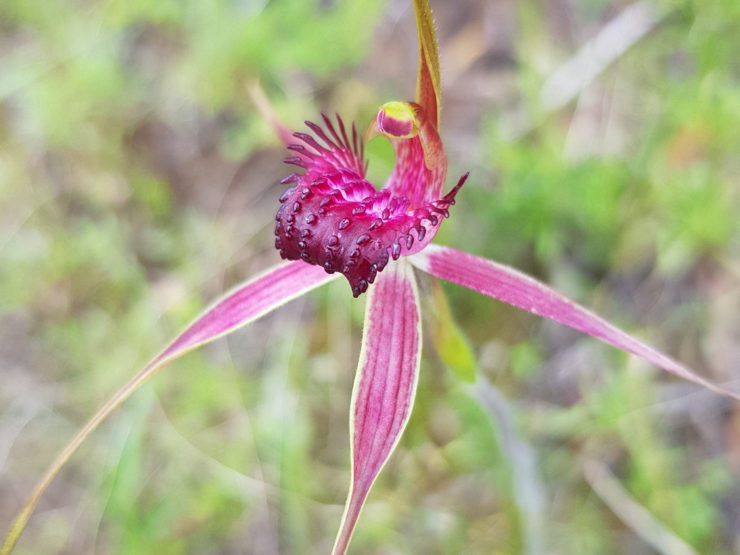
Carousel Spider (Caledenia arenicola)
A very pretty orchid with maroon petals fringed with green. Common on the Swan Coastal Plain south of Lancelin through to Yarloop, this is an orchid worth hunting for in the Perth area. Any sandy soiled bushland is possible, but Kings Park is a good place to look for these. Not an orchid you’ll spot everywhere but if you get out looking in spring, you should eventually find yourself some Carousel spider orchids.
Now you know what you’re looking for, go out and have fun exploring. Western Australia is a very special place for wildflowers. Remember to always tread carefully. Orchids are fragile. Stay on paths. You will be surprised how many you can find without having to bush bash. Never pick or dig up an orchid. It’s both illegal and futile. Transplanted orchids will die. Take nothing but photos as you enjoy their fleeting beauty.
Happy hunting.
Malcolm

